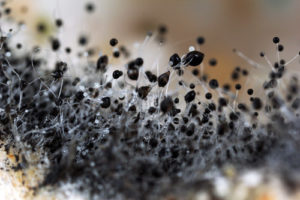Is Indoor Mold Different Than Outdoor Mold?

Is Indoor Mold Different Than Outdoor Mold?
Because ‘mold’ (the non-scientific terminology for fungus) has many different connotations, at Stern Mold, our NYC mold removal professionals get a lot of questions about mold specifics.
It’s eaten in blue cheese, used to ferment bread and beers, and responsible for penicillin, athlete’s foot, lining the walls within your shower, and taking up residence in overly moist areas of your home, garage, and yard. What’s the difference between the nearly 300,000 species of mold?
Growing on You
Mold/fungus is spread via spores and found everywhere. They can remain dormant for an extended time, but activate when moisture is present.
Mold Outdoors
Outdoors, fungus colonies aid in the natural breakdown of organic matter like plants. Mold types vary based on medium, season, and weather. These spores can hitchhike into the home via clothing/shoes, where furnishings/appliances/structures provide opportunities for growth.
Mold Indoors
Because, like humans, many things require moisture to survive, mold is often found alongside bacteria and dust mites inside your home. Creating a sickening milieu, these breakdown alongside the materials they use for their growth (drywall, carpet, etc.), producing volatile organic compounds which emit that ubiquitous mold odor.
Indoor mold damages, and eventually destroys, its host substance, impairing structural integrity. Unsightly and smelly, indoors it also poses serious health risks, promoting allergies, lung issues, and infections.
Kicking Mold Out
Mold does not belong in your home! Mold should be eliminated not only to preserve structural integrity, but also your health. While small areas may be tackled by homeowners, larger ones require expertise and protection.
Don’t live with mold. Kick fungus to the curb with the help of the NYC mold removal experts at SternMold today.
